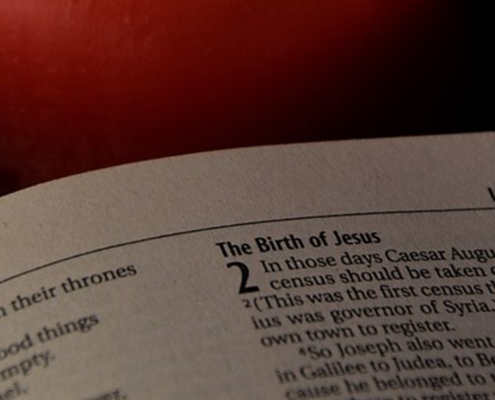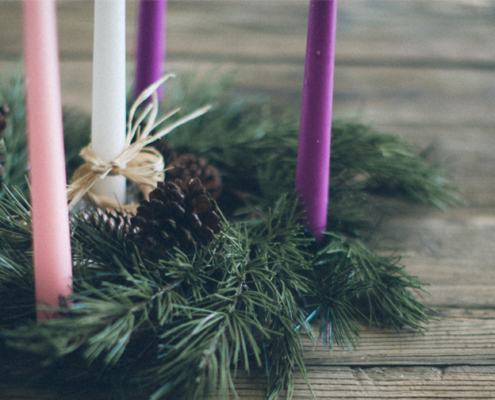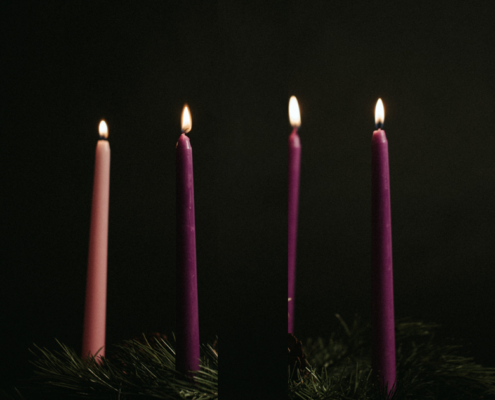As a child, my family set an Advent wreath on our dinner table daily. We lit the candle/s, read the readings and prayers, and shared dinner. While a teenager might be missing due to an extracurricular activity or dash off quickly to one after eating, generally, we had the great fortune of having a consistent family dinner with all six members present. This was partially a result of work schedules (both my parents were teachers), but it also was due to my parents’ commitment to this family time. It was the case for most families in our working-class town. Civic and church meetings, games and activities were set at times that provided a pause for families to eat together, before walking or driving to a community event.
A couple of seasons ago, I decided it was time to get my own Advent wreath. My family had a standard plastic green leaves one, which was filled with candles (that came with a daily devotional) purchased at church each year. As it turns out, finding a ready-for-purchase wreath was not as simple or inexpensive as I’d hoped! In the end, I paid a bit more than I wanted to re-establish a practice of expectation. And, although it was largely practiced in solitude, it was still a helpful way of placing myself in the season of Advent and distancing my heart and mind from distractions.
For families, Advent is a terrific time to introduce family devotions, if it isn’t a practice yet. The scents and sights of the candles foster awe and appreciation of the specialness of the season. The sight and smell of candles also add to the imprinting of the stories in our identity. For adults living alone or with others, it can be a celebratory way to enhance devotional time, to recharge a habit of quiet time with God, and to be present in the season.
The month before Christmas can be one of the most hectic of the year, so intentionally creating space to sit in expectancy of the Messiah each day with a practice that engages our senses and minds is a great gift of self-care and childrearing.
Consider before you start when the best time for you to do this is. If December dinners are not often shared at home due to overtime at work, shopping, meetings, parties, rehearsals and the like, then consider:
- What about breakfast? It could be a super way to slow down the start of the day and ensure that at least one meal is eaten as a family (or roommates). Leaving the candles lit while breakfast is eaten helps extend the effect.
- What about after-school snacks? If there is no such thing as a “good morning” in your worldview, but evenings are tricky, do you pick up the kids from school and day care? Could you carve a transition from school-to-home with Advent readings and snacks?
- What about your traditional quiet time? Perhaps you spend your quiet time before eating breakfast, during a coffee break or another time. What about taking a break from that routine to mark Advent?
- What about a bedtime ritual? Instead of a bedtime story or “just one more” Netflix episode, pray and light the Advent wreath, spend some time reflecting on the day, and read an Advent Scripture or devotional.
Below you’ll find some links to help you make your own Advent candle arrangement or wreath, and some options for Advent reading plans and devotionals.
CREATE SPACE TO EXPECT
Commit to a time of intentionally preparing for the Christ child and for Christ come again. The Advent wreath is a tool for cultivating expectancy. Typically, an individual or family lights the candle or candles (as the weeks go on) once a day each day through Christmas Eve.
Engage the senses. The sight of the candles’ light increasing as the weeks go on, the warmth of the fire and the scent of candles are additional signs of expectation. Most of us do not light candles everyday, so the candles alone communicate that something special is happening.
Read Advent-relevant Bible passages and devotionals.






